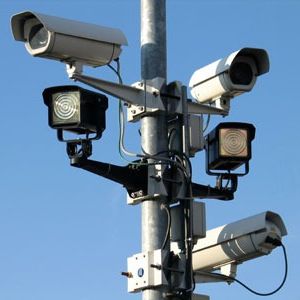Visual Sensor Networks (VSNs)
 There are over 70 million surveillance cameras in the US today. Installed both outdoors and indoors, such camera networks capture a vast amount of visual data that are key for security/safety applications, traffic analysis, environmental monitoring, etc. However, in order to extract actionable information from the captured video streams, a number of fundamental challenges must be addressed. Below are described recent and ongoing research projects focused on some of these challenges.
There are over 70 million surveillance cameras in the US today. Installed both outdoors and indoors, such camera networks capture a vast amount of visual data that are key for security/safety applications, traffic analysis, environmental monitoring, etc. However, in order to extract actionable information from the captured video streams, a number of fundamental challenges must be addressed. Below are described recent and ongoing research projects focused on some of these challenges.
- Background Subtraction: Detection of changes in camera’s field of view.
- Behavior Subtraction: Detection of the variability of changes in camera’s field of view.
- Action Recognition: Classification of human-body dynamics occurring in camera’s field of view.
- Video Summarization: Detection, classification and summarization of salient events.
We have been also involved in building complete VSN systems aimed at the detection and localization of people as well as recgonizing human activities in indoor environments either without or with expectation of privacy. Applications of such systems include access monitoring, occupancy sensing, smart-room controls, etc. Two such project are described below.
- Computational Occupancy Sensing SYstem (COSSY): Detection of occupants in commercial spaces to save HVAC energy, facilitate space management and help first responders in emergencies (ARPA-E funding).
- Privacy-Preserving Smart-Room Analytics: Detection, localization and recognition of human activities from very low resolution data for smart-room control (NSF LESA ERC funding).